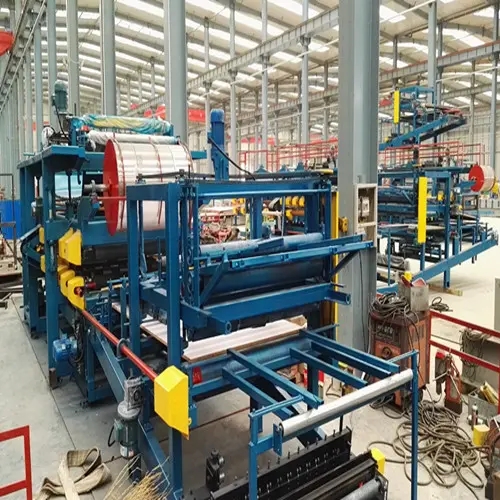
The Rise of Fully Automatic Cable Tray Cold Roll Forming Systems
In recent years, the demand for efficient and innovative manufacturing solutions has surged, particularly in the electrical and construction industries. One notable advancement is the development of fully automatic cable tray cold roll forming systems, which have revolutionized the production of cable trays used for organizing and supporting cables and wires in various applications. This article explores the benefits, processes, and implications of these advanced manufacturing systems.
What is Cold Roll Forming?
Cold roll forming is a metal forming process where flat metal strips are fed through a series of rollers that gradually shape the material into a desired cross-section without the use of heat. This method is particularly efficient for producing high-strength components with precise dimensions, making it ideal for cable trays. The cold forming process minimizes waste, enhances product consistency, and allows for complex geometries — all attributes essential for today's industrial demands.
The Advantages of Fully Automatic Systems
Fully automatic cable tray cold roll forming machines offer several advantages over traditional manufacturing methods
1. Increased Production Efficiency Automation significantly speeds up the production process. Automated systems can operate continuously without the need for manual intervention, resulting in higher output rates. This efficiency is crucial in environments where time and cost are critical factors.
2. Cost Reduction By minimizing labor costs and reducing material waste through precise cutting and shaping, fully automatic systems contribute to lower production costs. This is particularly beneficial for businesses operating on tight margins, as it can enhance overall profitability.
3. Enhanced Consistency and Quality Automated processes ensure that each cable tray produced maintains high quality and consistent specifications. This reliability reduces the chances of defects, leading to better customer satisfaction and fewer returns.
4. Flexibility and Customization Modern systems can be easily programmed to produce various sizes and designs of cable trays, allowing manufacturers to respond rapidly to changing market demands. This flexibility supports customized solutions tailored to specific project requirements.

5. Integration with Modern Technology Fully automatic systems often come equipped with advanced technologies such as Computer Numerical Control (CNC), which enables precise adjustments and monitoring. Integration with Industry 4.0 technologies allows manufacturers to connect their production processes with cloud-based systems for data analysis, maintenance alerts, and improved inventory management.
The Production Process
The manufacturing process of cable trays using fully automatic cold roll forming systems typically involves several stages
1. Material Feeding The process begins with the feeding of flat steel strips or coils into the machine. These materials are usually prepared with a corrosion-resistant coating to enhance durability.
2. Roll Forming As the material passes through a series of rollers, it is gradually shaped into the profile of the cable tray. This stage requires precise engineering to ensure that the dimensions and strength properties meet industry standards.
3. Cutting and Punching After the roll forming, the continuous strand of formed metal is cut to the required lengths and punched with necessary openings for cable management.
4. Finishing Post-processing treatments may be applied, such as powder coating or galvanization, to further enhance the trays' resistance to environmental factors.
5. Quality Control Automated systems often include built-in quality control mechanisms. Sensors and cameras inspect the formed trays to ensure they meet specifications, ensuring that only high-quality products reach the market.
Conclusion
The introduction of fully automatic cable tray cold roll forming systems represents a significant leap forward in manufacturing technology. By enhancing efficiency, reducing costs, and ensuring high-quality products, these systems cater to the growing needs of the electrical and construction industries. As technology continues to advance, we can expect further innovations in manufacturing processes, solidifying the role of automation in shaping the future of industrial production. As businesses seek ways to remain competitive in an increasingly demanding market, embracing such innovative solutions will be key to success.